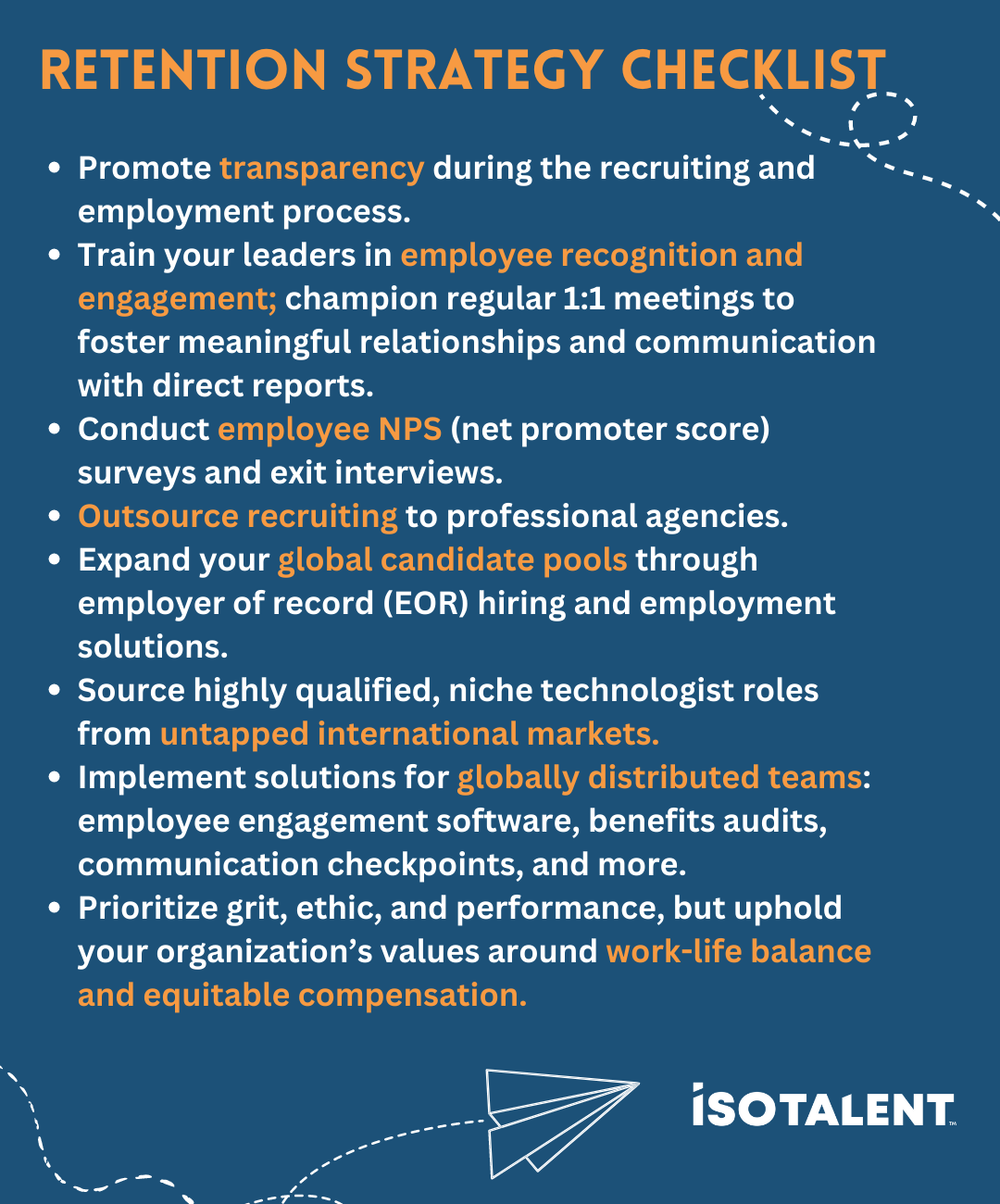 I’ve worked in the Utah tech scene for over 20 years. I worked for Utah tech startup Motivosity from 2017 to 2022, and most recently I transitioned and was promoted to EVP Sales at IsoTalent, a global recruitment firm headquartered in Lehi, Utah. I’ve led hiring panels and team-building committees; I’ve been the architect for ambitious incentive programs and mentorship initiatives; and I’ve used brand evangelism to build an extensive network of business contacts, mentors, and world-class colleagues. As I hear over and over again from peers and direct reports, my enthusiasm is, in a word, infectious.
I’ve worked in the Utah tech scene for over 20 years. I worked for Utah tech startup Motivosity from 2017 to 2022, and most recently I transitioned and was promoted to EVP Sales at IsoTalent, a global recruitment firm headquartered in Lehi, Utah. I’ve led hiring panels and team-building committees; I’ve been the architect for ambitious incentive programs and mentorship initiatives; and I’ve used brand evangelism to build an extensive network of business contacts, mentors, and world-class colleagues. As I hear over and over again from peers and direct reports, my enthusiasm is, in a word, infectious.
Through all my professional history, one thing has remained constant: I’m passionate about how the mechanisms of work shape the grit, performance, and longevity of our teams. And as a longtime professional in the employee engagement and hiring space, I get this question a lot: Why is it getting so difficult to consistently hire and retain good employees?
Now that I’m in the global recruiting space, I have some answers.
I believe those caught up in “people management” focus too much on zero-sum labor shortages and abstract “environmental” factors, and not enough on improving their very real organizational tactics. The truth is certain industries and team cultures can measurably improve their retention — it often comes down to a few simple yet powerful upgrades in hiring, recruiting, and employee engagement.
Keep reading to learn more about the current industry landscape, why employees quit their jobs, and what you can do to take ownership of your work culture, optimize your recruiting, and significantly reduce turnover.
HIGH TURNOVER IS COSTING YOU
Let’s start with a few high-level stats from the job market:
Why Are Certain Industries More Vulnerable?
Let’s break it down in three sectors: Tech, Professional Services, and Financial Services and Insurance.
The tech sector has a skyrocketing demand for talented, specialized workers. Because the industry continues to grow and dominate global markets, there is an ever increasing need for top-tier employees. In this tight labor market, those who know their worth are not afraid to quit and look for something better.
Financial and professional services may struggle for different reasons. As millennials dominate the labor force (and Gen Z close behind), some organizations have failed to adapt to their younger teams’ expectations of work, engagement, and recognition. Consider the following:
- While older generations tend to value stability and consistent rewards for a “can do” work ethic, Millennials often view institutional enclosures (like the office) as stifling — even dangerous to their drive and wellbeing.
- Millennials are committed to their work, but their sense of cause and effect and effort and reward is structured in fundamentally different terms than their predecessors’ paradigms.
- Millennials and Gen Z value meaningful work-life balance, engagement initiatives, and authentic diversity and inclusion efforts.
And in the current labor market, these Millennial workers — especially the top performers — have options. If your organization isn’t paying attention, you're likely feeling the churn.
A few of the top reasons employees report leaving their job:
- Poor relationship with the CEO or boss.
- Too much pressure; not enough focus on life outside of work.
- Lack of transparency and honesty with peers.
- Job was not communicated accurately during the recruitment and onboarding process.
- Lack of clear pathways for promotions and feedback.
These findings may seem abstract on paper, but the effects on workplace budget, morale, and performance are very real. Many organizations fail to formalize the modern recruiting and retention tactics needed for an ever-evolving laborscape.
Recent numbers show how systemic pressure hasn’t eased up on hiring. According to the Bureau of Labor Statistics, the U.S. saw 10.5 million job openings in November 2022. There are 1.7 open jobs available per jobseeker. On top of that, average tenure across major industries is unchanged: 4.1 years in 2022 compared to the same in 2020. Average tenure in the tech industry is even lower, with reports ranging from 1-3 year averages for major international organizations.
But don’t let these numbers discourage you. There are proven tactics to mitigate turnover. These I can personally attest to thanks to my time at Motivosity and IsoTalent:

THE IMPACT OF GLOBAL RECRUITING ON RETENTION
By taking recruiting cross-border, your organization opens up a world of options for human capital. This can help decrease time to fill, source and retain high-performing candidates, and expand your international diversity initiatives and tactical operations.
Take two case studies from recent IsoTalent clients in the tech space. These organizations leveraged our global recruiting and employer of record (EOR) solutions to expand their talent search outside of the United States:
Company 1: Anticipating aggressive growth milestones, this client engaged with IsoTalent to expand their global reach and hire technologists. This price-conscious startup required cost-effective recruiting solutions without sacrificing candidate quality or experience. IsoTalent recruited 6 new employees throughout LATAM, each employed legally through IsoTalent's global EOR.
Their Key to Retention: this client was able to source talent from a less-competitive market, which in turn reduced the likelihood of turnover during the first year of employment. The client was extremely impressed with the quality of these global candidates; they continue to work with 5 of the 6 hired to this day.
Company 2: This client leveraged IsoTalent’s global hiring solutions to build out their engineer and customer success teams. Over the three years of hiring and employment, the client has enjoyed sub 5% turnover in these highly qualified teams; these employees continue to refer new candidates from their networks as the client expands hiring.
Their Key to Retention: Three primary tactics support this sub 5% turnover —
- The client offered desirable benefits and salaries exceeding local averages in Mexico and the Philippines
- IsoTalent’s global EOR team took care of all international compliance and communication to ensure a smooth onboarding process
- The client engaged global jobseeker markets with proven track records for quality and retention. IsoTalent advised on global trends and market insights to ensure the right fit for their objectives.
My top-line summary from IsoTalent’s work with recruiting clients? When paired with a strong engagement strategy and powerful team culture, your business can leverage global recruiting tactics and hybrid workforces to measurably improve your employee retention.
I’ve experienced the systemic effects of formal retention strategies in business. While smart budgeting, great timing, sophisticated DevOps initiatives, and cutting-edge products will all drive your 2023 performance, nothing will amount to much if you don’t have the team capital to support your long-term operations. It’s these human investments — engagement, community building, public relations, compensation packages, retention metrics, and employee advocacy — that make the difference.
All of this is achieved through incremental, persistent retention campaigns, whether the employee sits across from you or works from an entirely separate continent. Whether you are their leader, teammate, or direct report, always be their champion.
For help building out your global retention and expanding your recruiting efforts, book a zero-obligation discovery call with IsoTalent.





SUBMIT YOUR COMMENT